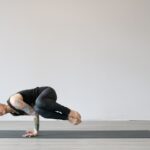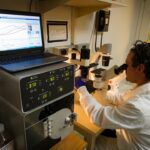Physical activity has been extensively linked to various health benefits, such as enhanced cardiovascular health, better weight control, and increased energy levels. Recent scientific studies have also revealed a significant connection between physical activity and improved cognitive function and creativity. The relationship between physical exercise and creative thinking has become a subject of growing interest among researchers in recent years.
This article examines the scientific basis for this connection, explores different forms of physical activity that may boost creativity, discusses how physical activity reduces stress and enhances cognitive abilities, and provides practical suggestions for individuals and organizations to integrate physical activity into their daily routines to foster creativity.
Key Takeaways
- Physical activity has a strong connection to creativity and can enhance cognitive function.
- Engaging in physical activity can stimulate the brain and improve creative thinking.
- Different types of physical activity, such as aerobic exercise and yoga, can have varying impacts on creativity.
- Physical activity can reduce stress and improve cognitive function, leading to enhanced creativity.
- Incorporating physical activity into daily routines can be a powerful tool for boosting creativity and overall well-being.
The science behind physical activity and its impact on the brain
The Chemical Cascade of Physical Activity
When we engage in physical activity, our bodies release a cascade of chemicals and hormones that have a direct impact on brain function. One of the key players in this process is brain-derived neurotrophic factor (BDNF), a protein that supports the growth and maintenance of neurons.
Boosting Neuroplasticity and Cognitive Function
Physical activity has been shown to increase levels of BDNF, which in turn promotes neuroplasticity, the brain’s ability to form new connections and adapt to new challenges. This process is crucial for learning, memory, and cognitive function, all of which are essential components of creativity. Furthermore, physical activity also increases blood flow to the brain, delivering much-needed oxygen and nutrients to support optimal brain function.
Enhancing Creative Thinking and Overall Well-being
This enhanced blood flow can improve attention, focus, and overall cognitive performance, all of which are essential for creative thinking. Additionally, physical activity has been shown to reduce inflammation in the brain, which can have a positive impact on mood and mental well-being, further supporting the creative process. Overall, the science behind physical activity’s impact on the brain provides compelling evidence for its role in enhancing creativity.
How different types of physical activity can stimulate creativity

There are various types of physical activity that can stimulate creativity in different ways. Aerobic exercises such as running, swimming, or cycling have been shown to increase blood flow to the brain and promote the release of endorphins, which can elevate mood and reduce stress. These activities can also provide a meditative space for individuals to clear their minds and engage in creative thinking.
On the other hand, strength training and resistance exercises have been linked to improved cognitive function and memory, which are essential for creative problem-solving and idea generation. Yoga and tai chi are forms of physical activity that combine movement with mindfulness and breathwork, promoting relaxation and reducing stress. These practices have been shown to enhance mental clarity and focus, providing an ideal state for creative inspiration.
Additionally, simply taking a walk in nature has been found to have a profound impact on creativity, as exposure to natural environments has been linked to improved attention and cognitive function. By understanding how different types of physical activity can stimulate creativity, individuals can tailor their exercise routines to best support their creative endeavors.
The role of physical activity in reducing stress and enhancing cognitive function
Stress is a well-known creativity killer, as it can impair cognitive function and limit our ability to think outside the box. Physical activity has been shown to be a powerful tool for reducing stress and promoting mental well-being. When we engage in physical activity, our bodies release endorphins, which are natural mood lifters that can help alleviate stress and anxiety.
Additionally, physical activity provides an opportunity for individuals to disconnect from work or other stressors and focus on the present moment, promoting mindfulness and relaxation. Moreover, regular physical activity has been linked to improved cognitive function, including enhanced memory, attention, and problem-solving skills. These cognitive benefits are essential for creativity, as they provide the mental foundation for generating new ideas and solutions.
By reducing stress and enhancing cognitive function, physical activity creates an optimal environment for creative thinking and innovation.
Incorporating physical activity into daily routines to enhance creativity
Incorporating physical activity into daily routines is essential for reaping the creative benefits of exercise. This can be as simple as taking a 30-minute walk during lunch breaks or scheduling regular workout sessions before or after work. Finding an exercise routine that aligns with individual preferences and schedules is crucial for long-term adherence.
Additionally, integrating movement into daily activities, such as taking the stairs instead of the elevator or biking to work, can add up to significant physical activity over time. Furthermore, incorporating mindfulness practices such as yoga or tai chi into daily routines can provide a dual benefit of physical activity and stress reduction. Creating a supportive environment for physical activity at home or in the workplace can also encourage regular exercise.
This can include setting up standing desks, creating walking meetings, or organizing group fitness activities. By making physical activity a priority in daily routines, individuals can harness its creative benefits while also improving overall health and well-being.
Case studies and examples of individuals and organizations leveraging physical activity for creative inspiration

Entrepreneurs and Business Leaders Embrace Exercise
Many successful entrepreneurs and business leaders have incorporated regular exercise into their daily routines to support their creative thinking and problem-solving abilities. Richard Branson, founder of the Virgin Group, is a prime example of this. He is known for his love of kiteboarding and believes that physical activity helps him stay sharp and focused in his business endeavors.
Organizations Prioritize Workplace Wellness
Companies like Google have implemented innovative workplace wellness programs that prioritize physical activity as a means to enhance creativity and productivity among employees. Google’s campus features various fitness facilities, including basketball courts, swimming pools, and hiking trails, encouraging employees to stay active throughout the workday.
Fostering Creative Thinking and Collaboration
These initiatives not only promote physical health but also create an environment that fosters creative thinking and collaboration. By incorporating physical activity into their daily routines, individuals and organizations can reap the benefits of enhanced creativity, leading to innovative solutions and business success.
Embracing physical activity as a tool for boosting creativity
In conclusion, the connection between physical activity and creativity is a compelling area of study that offers valuable insights into how we can optimize our cognitive function and enhance our creative potential. The science behind physical activity’s impact on the brain provides compelling evidence for its role in promoting neuroplasticity, reducing stress, and enhancing cognitive function—all of which are essential components of creativity. By understanding how different types of physical activity can stimulate creativity and incorporating movement into daily routines, individuals can harness the creative benefits of exercise.
Furthermore, case studies of individuals and organizations leveraging physical activity for creative inspiration highlight the real-world impact of prioritizing movement in daily life. As we continue to explore the connection between physical activity and creativity, it is clear that embracing regular exercise not only supports our physical health but also nurtures our mental well-being and unlocks our creative potential. By recognizing the profound impact of physical activity on our brains and creativity, we can cultivate a culture that values movement as a powerful tool for innovation and inspiration.
If you’re interested in learning more about developing critical thinking techniques for analytical reasoning, check out the article «Developing Critical Thinking Techniques for Analytical Reasoning» on Intelligence and Hacks. This article provides valuable insights and tips for honing your critical thinking skills, which can be essential for boosting creativity. (source)
FAQs
What is the relationship between physical activity and creativity?
Physical activity has been shown to have a positive impact on creativity. Engaging in exercise can help improve cognitive function, enhance problem-solving skills, and increase the brain’s ability to generate new ideas.
How does physical activity boost creativity?
Physical activity increases blood flow to the brain, which can enhance cognitive function and stimulate the production of new brain cells. Exercise also releases endorphins, which can improve mood and reduce stress, both of which are important for fostering a creative mindset.
What types of physical activity are most effective for boosting creativity?
Aerobic exercises such as running, swimming, and cycling have been shown to have a particularly positive impact on creativity. However, any form of physical activity that gets the heart rate up and increases blood flow to the brain can be beneficial.
How much physical activity is needed to see a boost in creativity?
Research suggests that even a single session of moderate-intensity exercise can have a positive impact on creativity. However, regular physical activity is recommended for long-term benefits. The American Heart Association recommends at least 150 minutes of moderate-intensity exercise per week.
Are there specific exercises or activities that can specifically enhance creativity?
While any form of physical activity can have a positive impact on creativity, some people find that activities that require focus and concentration, such as yoga or tai chi, can be particularly effective for enhancing creativity. Additionally, outdoor activities that expose individuals to nature and natural surroundings have been shown to have a positive impact on creative thinking.






